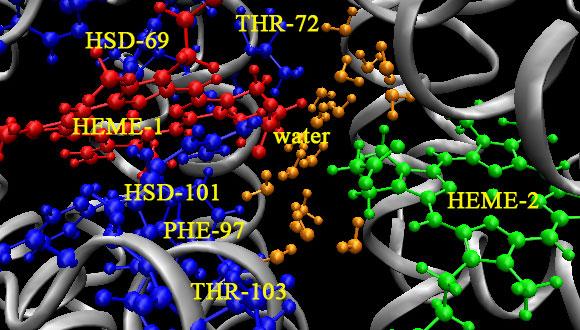Chemical Physics Seminar: Low Dimensional Perovskite Nanocrystals Not Your Usual Quantum Dots
Dr. Yehonadav Bekenstein, University of California, Berkeley, California
Abstract:
The soaring global demand for energy calls for out of the box thinking in development of energy solutions, including materials with performance far beyond that achievable today.
A new class of materials the lead-halide perovskites show enigmatic high efficiencies in both photovoltaic and light-emitting applications. Thermodynamic consideration demand imperfection free material for such performance. However, in perovskite these restriction seem to be relaxed. I will show how one can use nanocrystals as a model system to study the origin of these properties.
Low-dimensional colloidal nano-crystals of cesium lead halide demonstrate exceptionally bright emission without shelling and unusual room temperature transformations not common to other semiconductors nanocrystals. These properties suggest a near equilibrium nanocrystal system. In a series of studies we follow the formation and transformations of these nanocrystals. We can now grow quantum confined cesium lead halide nanocrystals with cube, plate and wire shapes and with atomic precision. We demonstrate how quantum confinement and dimensionality dictate the exciton behavior and photophysical properties of these crystals. In the case of two dimensional nanoplates we observe strong quantum confinement of the excitons.(1) In the case of nanowires we show that broken symmetry manifests in significant polarized emission. These nanowires can be further utilized through 3D printing and alignment process to fabricate highly polarized functional metamaterials. In addition to the synthetic shape control, further control of the optical properties is achieved by changing the anion composition. The “softness” of the perovskite crystal allows post synthetic room temperature transformations that tune the material band-gap values throughout the visible spectrum.(2-3) The resulting high quantum yield, combined with the synthetic versatility and facile transformations, position colloidal perovskites as a unique model system for the study of charge dynamics and thermodynamic transformations at the nanoscale, contributing to the understanding of next generation materials for energy. Future developments in perovskites, leading to more stable and lead free materials will also be discussed.
(1) Bekenstein, Y.; Koscher, B. A.; Eaton, S. W.; Yang, P.; Alivisatos, A. P. J. Am. Chem. Soc. 2015, 137 (51), 16008.
(2) Zhang, D.; Yang, Y.; Bekenstein, Y.; Yu, Y.; Gibson, N. A.; Wong, A. B.; Eaton, S. W.; Kornienko, N.; Kong, Q.; Lai, M.; Alivisatos, A. P.; Leone, S. R.; Yang, P. J. Am. Chem. Soc. 2016, 138 (23), 7236.
(3) Liu, Z.; Bekenstein, Y.; Ye, X.; Nguyen, S. C.; Swabeck, J.; Zhang, D.; Lee, S.-T.; Yang, P.; Ma, W.; Alivisatos, A. P. J. Am. Chem. Soc. 2017, 139 (15), 5309.


